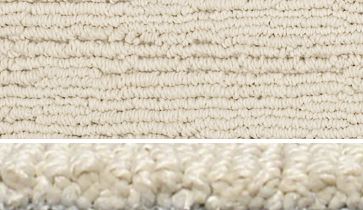What is Berber Carpet
There is a great deal of confusion surrounding the use of the term berber as it relates to carpet. Even among industry insiders, the word berber can have multiple meanings. The confusion surrounding berber only grows when the terms berber, loop and even pattern are used interchangeably. There is no wrong way to use the term berber given that it can have different meanings for different people. The key to understanding is to have a conversation with a sales associate to ensure that everyone is on the same page.
Understanding Berber Loops
The use of the term berber when it is used to describe a loop carpet can be traced back to an indigenous people of North Africa, the Berbers, who created hand woven textiles that featured a distinct knot and natural multi-color flecks spun from different parts of the sheep’s coat. The knot is the distinguishing characteristic as the loops in loop carpeting today are similar in appearance to the woven knots in the textiles created by the Berber people.

The most traditional and widespread use of the term berber is when it is used to describe loop carpets. A loop carpet is a type of construction that is created when the yarn is sewn or tufted into the backing and left uncut (cut pile carpets are created when these loops are cut). There are some variations in loop carpeting as well, such as level loops, meaning that the loops are all one height, and patterned loops, which are created when the loops are varying heights. Some patterns are created with cut-and-loop construction, meaning some loops are cut and other are not.
Additional References to Berber
Berber is also used to describe a fleck of color in a lighter or natural-colored carpet. The flecks of color are similar to those found in nature, such as browns, tans and even rust colors. (Think Fall). A berber, when used this way, can be any type of construction but is commonly used in textured and frieze styles. These berbers are typically associated with more casual looks.

